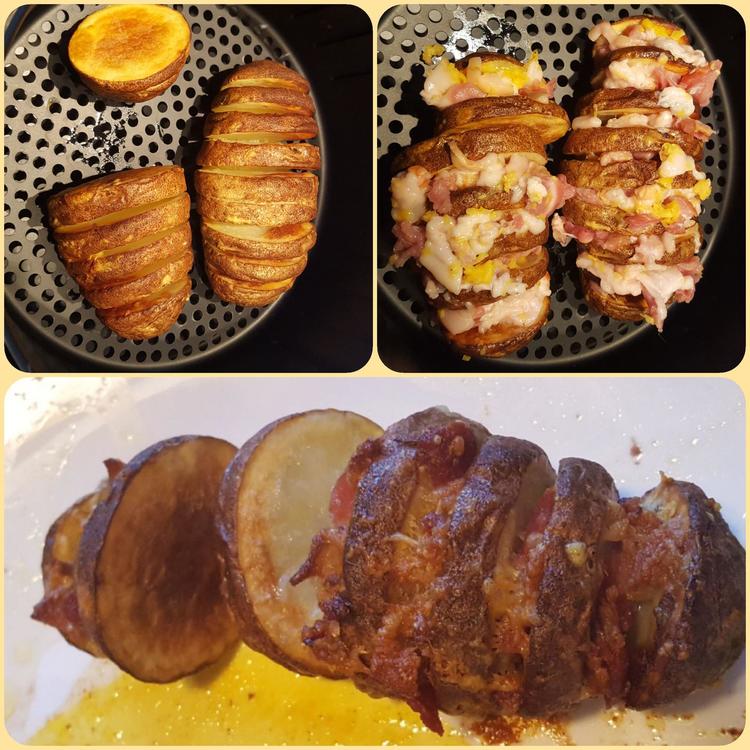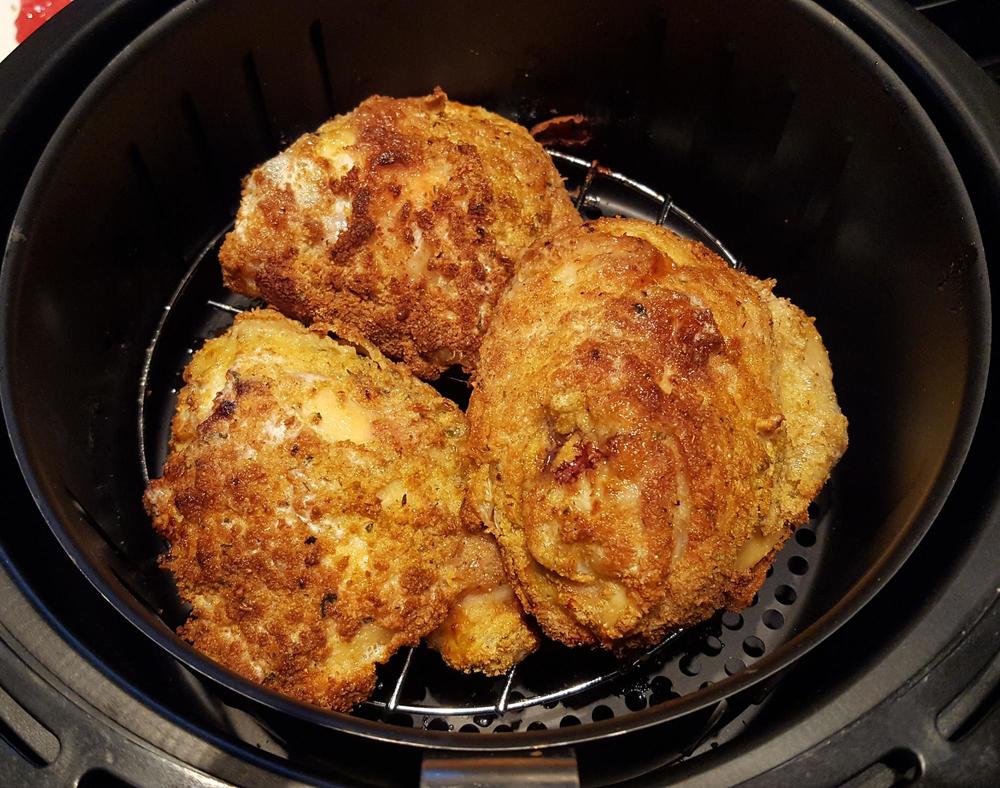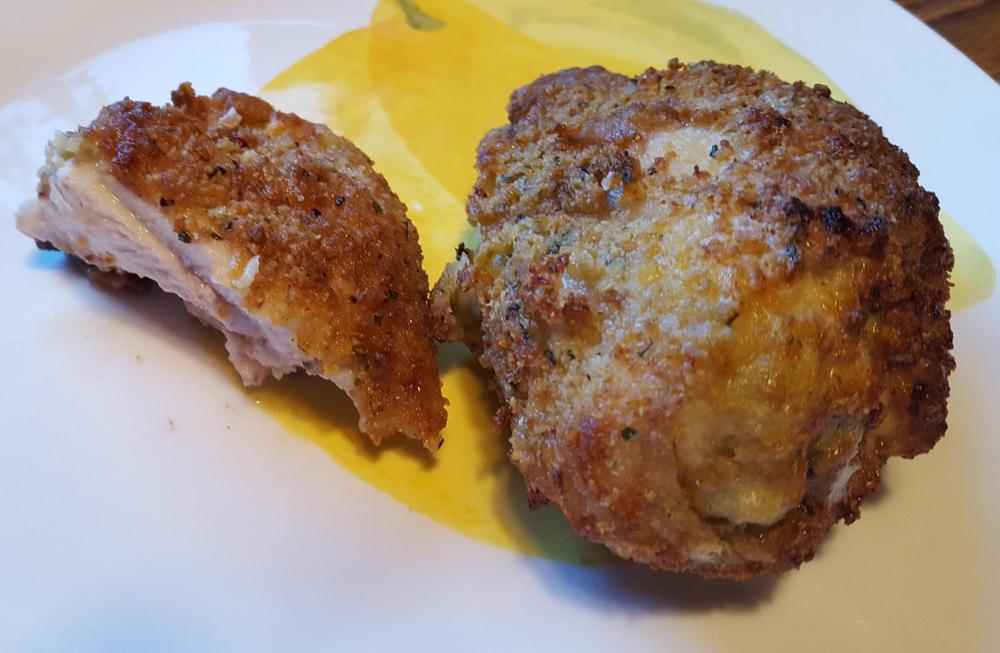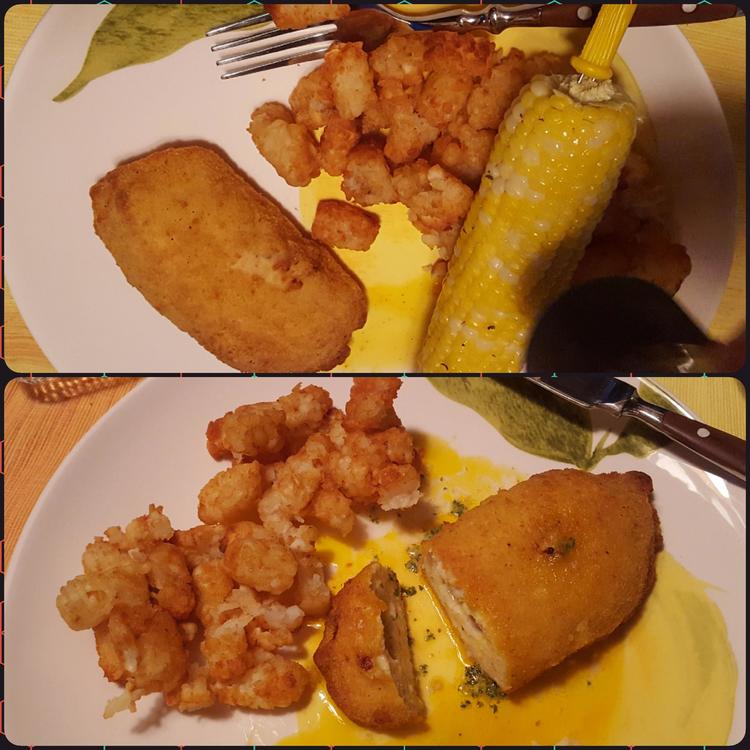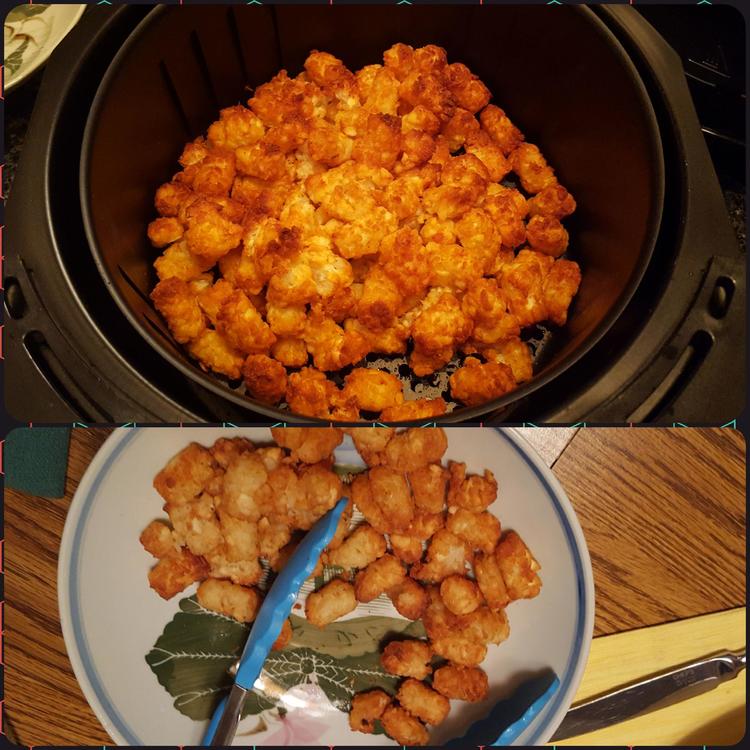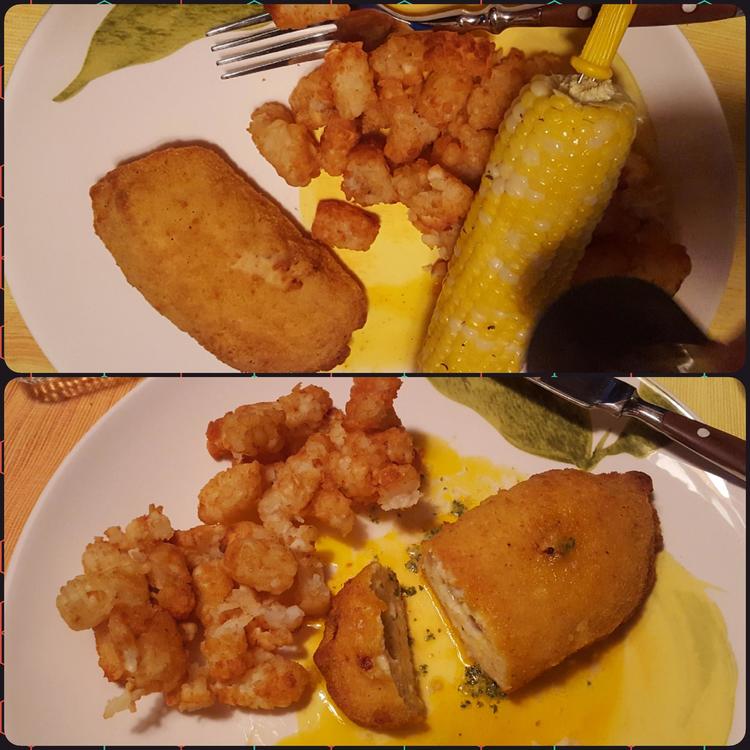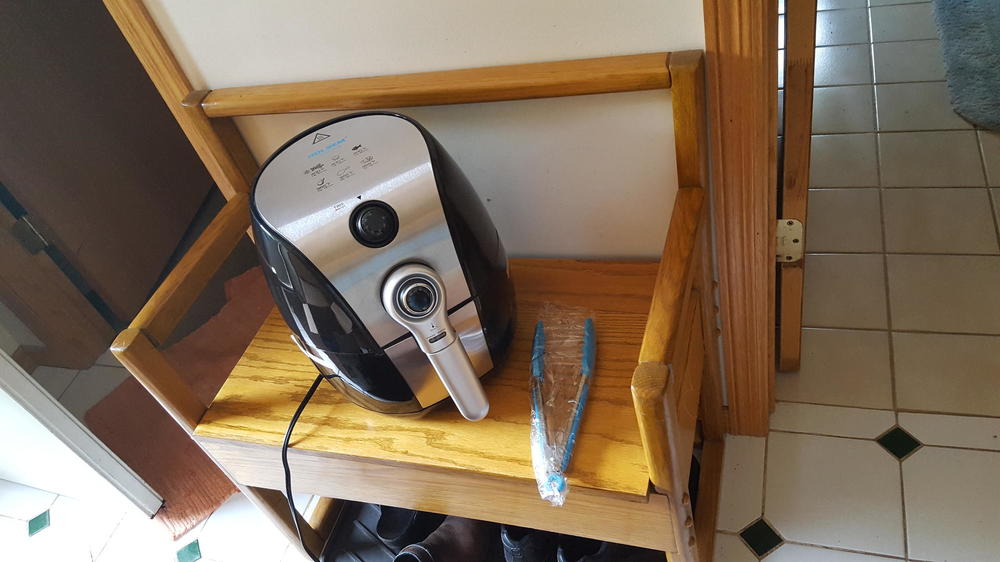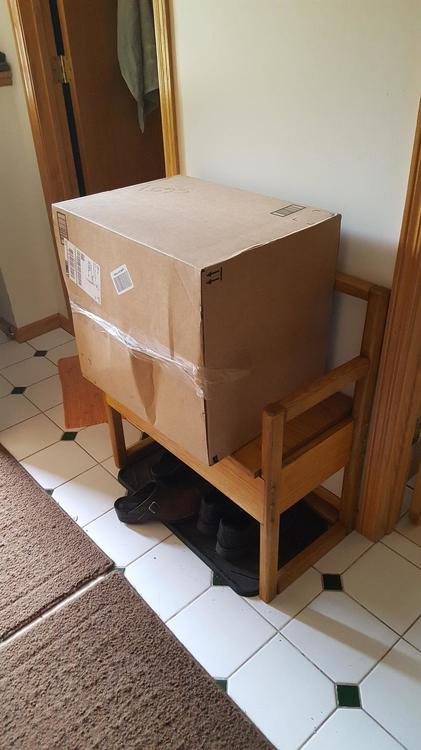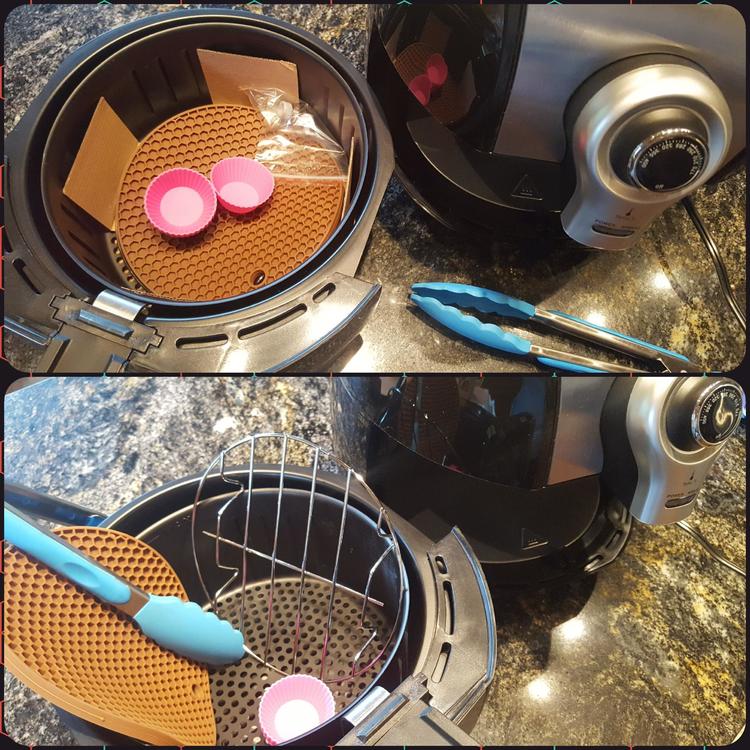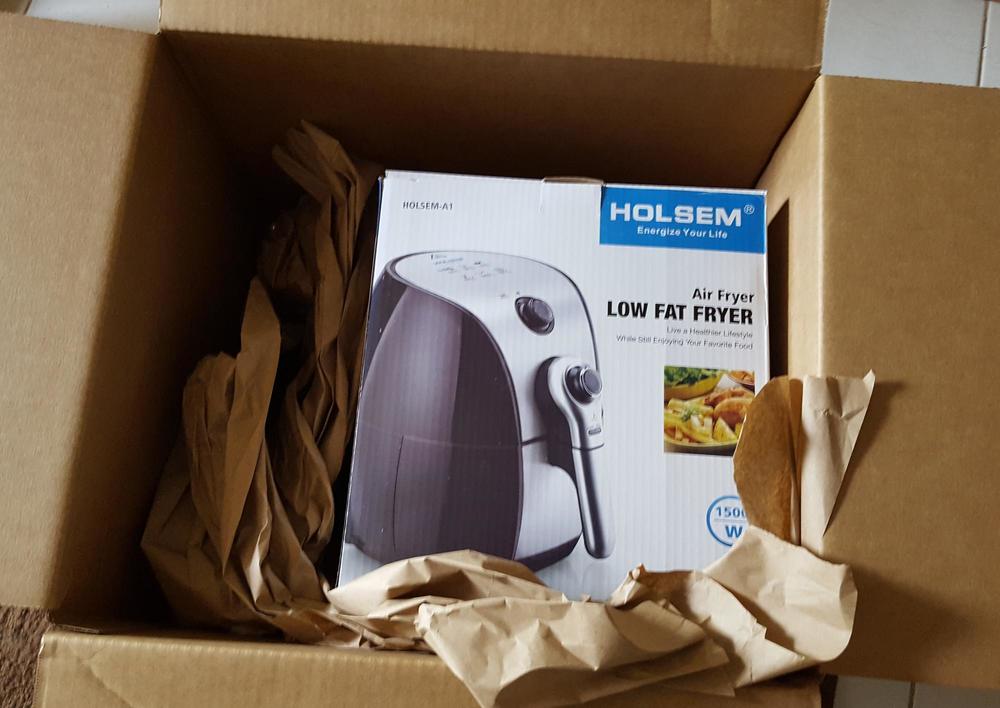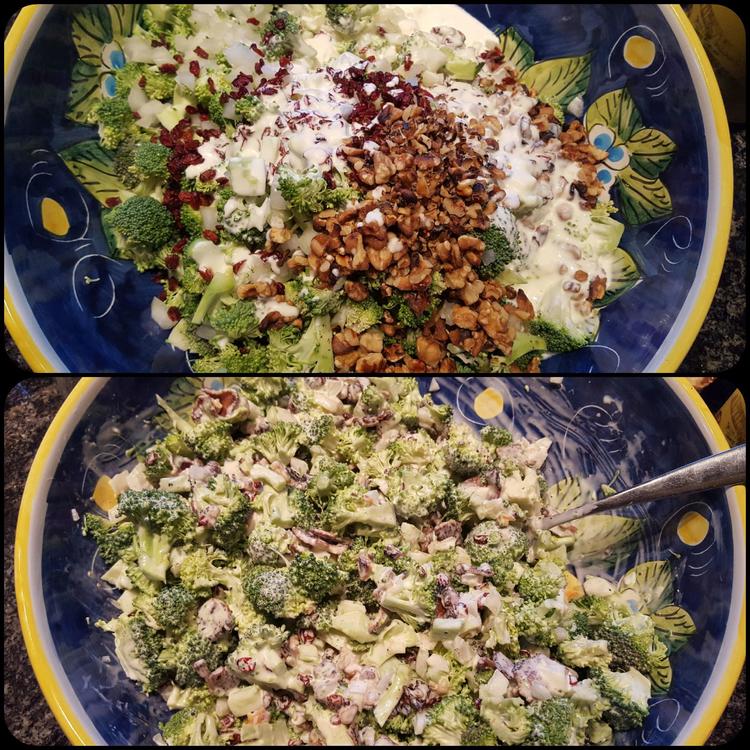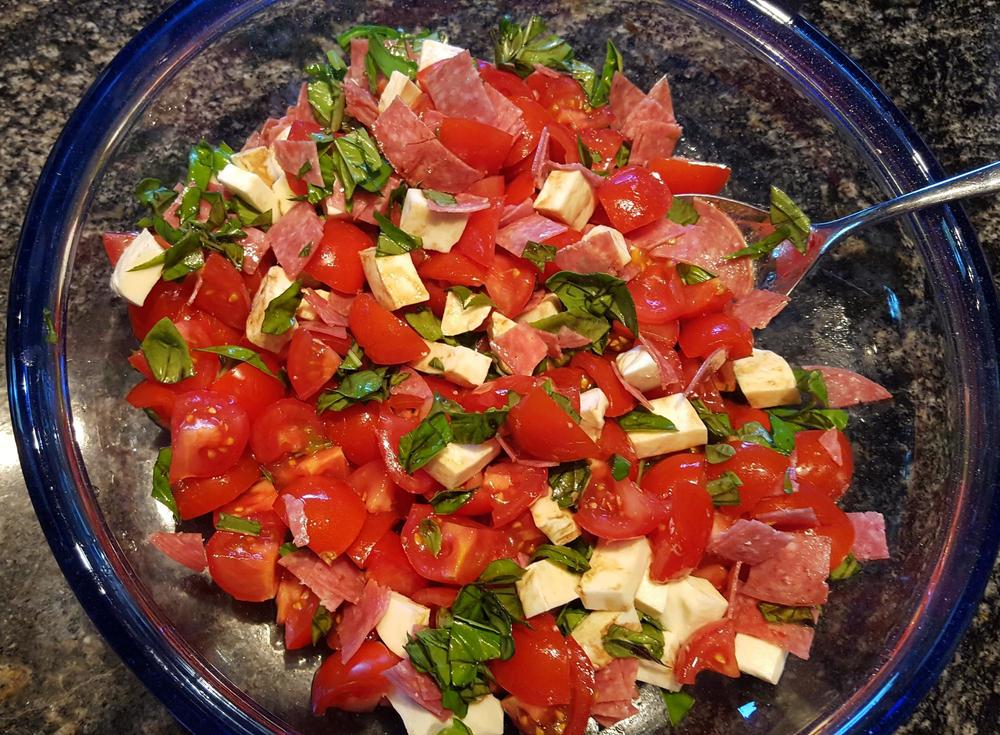-
Posts
13,748 -
Joined
-
Last visited
Content Type
Profiles
Forums
Store
Help Articles
Everything posted by Smithy
-
Thanks for checking. Ahem.
-
I absolutely do not need any of those cute jars, so I absolutely do not need to know where you (or Kerry, I think?) got them. IIRC they were a thrift store find. Whew - saved from making a shopping list for gizmos! Sorry if you wrote this before - but do you have a link to that ginger-carrot dressing? It looks gorgeous!
-
That's the plan, my friend...
-
Tonight I tried a recipe out of the included booklet: Accordion Potatoes. Slice the potatoes nearly (but not all the way) through. Dress with olive oil, salt and pepper; cook for a bit. Remove from heat, add chopped bacon and grated cheese, cook a few minutes longer until the stuffing is done. Serve. There was a more-than-optimal delay between the "cook until stuffing is done" and "serve" stages, and the final result was a bit drier than I'd have liked. Nonetheless, it was good. Some stuff in a counter corner has been moved or removed to make room for this fryer. It's well on its its way to earning a permanent home here.
-
ElsieD, I'll be watching your experiments with interest. An air fryer has found earned its way onto our counter, where I had thought there was no room. Now I'm starting to think that the CSO would have about the same footprint as the air fryer and toaster combined...hmm...and maybe do the work of both...hmmm....
-
I shall never again make an enchilada casserole using frozen Hatch chiles without carefully reading my freezer pack labels. I knew one package was Medium heat. I thought the other was Mild, but couldn't find the label (which was helpfully printed, in my handwriting, using indelible ink, on the bottom seam of the package ). I put approximately half of each package, juice and all, into the casserole. Lordy, that was hot! I found the label the next day. Unfortunately, we were out of sour cream. Fortunately, we had cream cheese and easily-shredded cheddar. Cream cheese isn't much like sour cream, but it tamed the heat.
-
I thoroughly enjoyed the blackberries I could pick off the roadside verge hedges in the English countryside, many years ago. They made a nice hiking snack. However, given the thorniness of those bushes I'd have needed much better protection if I'd wanted to harvest enough for, say, pie or preserves. Wild raspberry bushes have nothing on blackberry brambles! I didn't know until now that the blueberry comb is hard on the bushes. Not that I've ever had the chance to try one, but I appreciate the information.
-
Tastes differ. I like it, especially for chicken salad. My darling thinks sous vide may be the only reliable way to cook chicken breast without drying it out. To be honest we think it can be better fried, but only if we are lucky enough to arrive at the deli counter just as the chicken breasts are coming out of the fryer.
-
That reminds me of another possibility: Larb! eta: (Oops, that IS what Shelby suggested. Well, here's another recipe, in RecipeGullet.)
-
@MetsFan5, there's a wealth of information around here on sous vide, and it can seem a bit intimidating - especially where experienced users come up with different preferences. If you should decide to try it, you can do so for under $100 for a sous vide circulator. A vacuum-packer is nice but not necessary; simple Ziplock-style bags will do. You don't need a special container if you have a large stockpot (or canning kettle) or a small waterproof cooler. The Chefsteps web site has a week-long menu for sous vide newcomers; I haven't worked my way through it, but in reviewing it I see I should, since I'm still not using my circulator(s) to best advantage: Chefsteps' Get Started with Sous Vide: Your First Week's Menu. In addition, this topic does a pretty good job of showing how other sous vide newcomers became comfortable with their new technology: Sous vide for a newbie. This post in particular should inspire you to take the plunge. You can do this!
-
I had no idea that he was ailing. His voice on the KCRW podcast was so lovely, and his writing so delightful, I almost felt that we'd met. RIP, Jonathan. Thank you for the tours.
-
Chicken thighs tonight. I roughly followed the instructions for chicken tenders in the cookbook provided with the air fryer. In this case, that means I followed their procedure to dredge in seasoned flour, dredge in beaten egg, dredge in seasoned bread crumbs, then cook at 320F for 15 minutes. It took more nearly 25 minutes, with a couple of turns, to get the meat cooked properly. Adjustments were expected: their recipe was for chicken (breast) tenders; mine was for whole thighs. The bad news: with this setup, only 3 thighs could be accommodated, and they really crowded the cooker and needed extra turning. The good news: with this setup, we had to practice portion control. That isn't one of our strong suits...but we were well satisfied with 1-1/2 thighs each. (We had some broccoli salad as a side, but it doesn't show up here.) We liked the results. They were comparable to deep-fried chicken thighs from our favorite grocery delis. The deep-fat fryer is edging its way to the garage-sale box.
-
Wown! Very, very impressive. Nicely done, Kerry.
-
I think @rotuts has commented on the time and the "cured" taste and texture. Maybe he'll chime in after he checks his copious notes.
-
At that price, going out and picking the blueberries gets much more attractive...if you have time and mobility...but only if you have both of those. I've had some fine blueberry picking up in @Tri2Cook's country, but never tried it farther east.
-
That IS a surprising concept to me! Please tell more. Do you brew the coffee in cold fizzy water, or do you brew in still water and then dilute with the fizzy stuff?
-
Hello and welcome, deewelch! What do you like to cook?
-
That is so like our shopping expeditions! Even when we aren't hungry, there are always the off-schedule temptations. I'm glad I'm not alone in enthusiastic spontaneity.
-
I picked up a Holsem 3.4 quart air fryer during last week's Amazon Prime marathon. For $66 and a no-hassle 30-day return policy I figured it wasn't much of a risk. Last night was the first test. I posted more about the package size and contents here. As for the dinner itself, Chicken Kiev (from a local meat market) and Tater Tots were the first two tries. The Kiev took some 20-25 minutes at 350F to cook; then I set those into a warming oven while the Tots cooked at 400F. Although I shook the Tots in the basket once or twice, they still stuck together in the middle. More stirring, or a smaller batch, would be appropriate. These photos aren't as good as they should have been, but they're all I have left from the night except happy taste memories. Tests will continue. I loved the lack of mess and lack of oil. If other results are as good this, I'll be getting rid of my garage-sale special deep fat fryer, which I very rarely use.
-
I bought a couple of temperature controllers (still to be tested) and a self-contained mandoline (that's going back) but the big prize was my new Holsem 3.4 quart air fryer. I managed to persevere through the web crashes and lightning deal wait-lists, and got it for $66. It arrived this week. At first sight I was quite alarmed. Anything this big wouldn't have room in the kitchen. Fortunately, the box had a lot of padding: and the unpacked product is of a more manageable size. It's still pretty big, but if we like it well enough we'll be able to make room for it. The recipe booklet that comes with it has some good-looking recipes, but I found the back cover amusing: Does anyone else take this to mean that the digital version isn't convenient? A lot of stuff was packed into that box. The web site says that the silicone mini-cupcake molds can be used for eggs. Quail eggs, maybe. I don't think even a small chicken egg would fit. Rather than try any of the booklet's recipes, I had picked up some ready-to-go Chicken Kiev and a package of Tater Tots for the first test. The user's manual says to limit the amount of weight in the basket; typical weights are 500g or 600g. There won't be any whole chickens cooked in this thing, but a Cornish Game Hen would fit. I cooked 2 Chicken Kiev servings at 350F for 20 or 25 minutes (until they were done; my timing was sloppy) and then set them aside in a warm oven until the Tots were done. Overall, the dinner was successful. This particular fryer last night had a tendency for the basket to pop out of the carrier tray when removing the assembly to shake or dish out the food. If it doesn't latch more securely it may have to go back. Otherwise, it was easy to use and the lack of mess was a delight. We'll be testing it out during the 30-day no-hassle return period. I'll post further results on The Air Fryer Topic, and try for better photo quality while I'm at it!
-
I also have lovage growing, next to the house. It reproaches me every time I step outside, because I forget to use it. "Celery on steroids" is a good description.
-
The sandwiches and salad look good. Too bad about the Tater Tots! It sounds like we both had problems with our cooking mojo last night.
-
Welcome, Hughie! Are you interested in only the food safety aspect of bacteria - as in spoilage, or do you also experiment with fermentation? There are quite a few pickling and brewing enthusiasts in these forums. You can also find information about sourdough bread making. What do you like to eat?
-
As I noted earlier, our heat wave broke today. I already had plans for the aforementioned broccoli salad and Caprese salad, however. Broccoli salad, before and after tossing: Caprese salad, with Sappori tomatoes I found at the grocery store: Even my darling, the meat-eater, thought these were plenty. He thought so even before I managed to torch the bratwursts into flavored sawdust.
-
Good luck! You seem to be having the opposite experience of my darling, who learned to camp and became seasoned campers before they ever experienced bad weather. By then they'd learned some basics like digging a trench around the tent in case it rains, even without rain in the forecast. Since he and his first wife had their children along, the food situation was different from yours. I haven't been able to think of things they did that would help you, except things already suggested.





